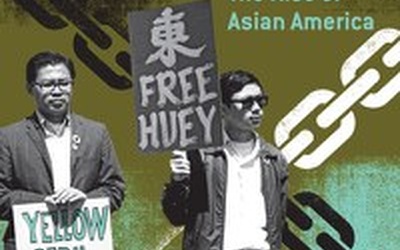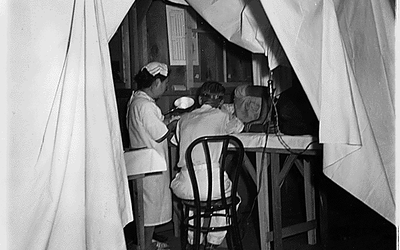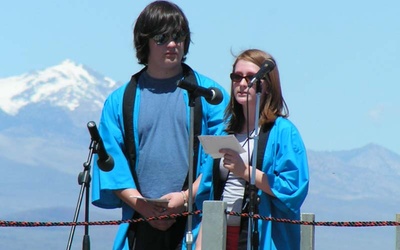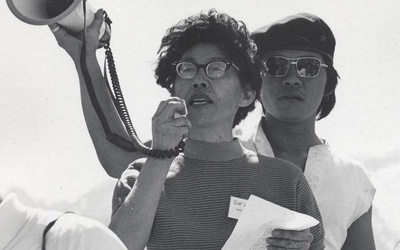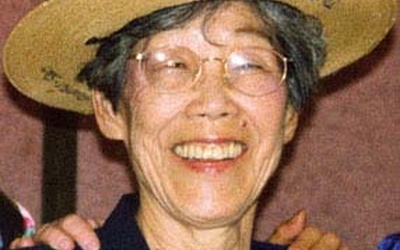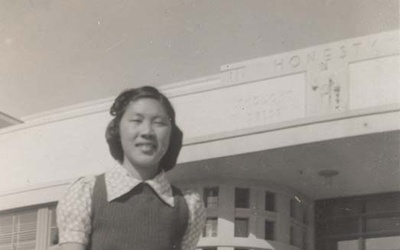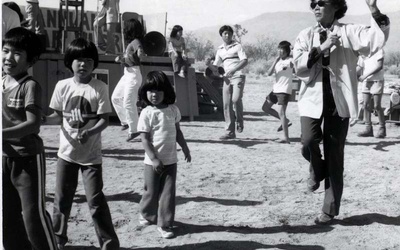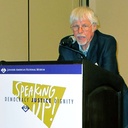
Arthur A. Hansen
@Art_HansenArt Hansen is Professor Emeritus of History and Asian American Studies at California State University, Fullerton, where he retired in 2008 as the director of the Center for Oral and Public History. Between 2001 and 2005, he served as Senior Historian at the Japanese American National Museum. Since 2018, he has authored or edited four books that focus on the topic of the resistance by Japanese Americans to their unjust World War II oppression by the US government.
Updated August 2023
Stories from This Author
Asian American Movement Study Showcases U.S. Cultural Radicalism’s Robust Tradition
Oct. 30, 2013 • Arthur A. Hansen , Nichi Bei News
At California State University, Fullerton, I taught history, Asian American studies and American studies courses. My favorite was an American studies offering developed in the mid-1970s: “American Cultural Radicalism.” If now teaching it, I assuredly would assign Daryl Maeda’s Chains of Babylon. The best study on the Asian American Movement’s origins and early ascent, it also brilliantly showcases U.S. cultural radicalism’s robust tradition. While cultural radicalism can be defined variably, “one of its central characteristics,” according to cultural historian Jesse …
A Historical Anthology on Redress
Oct. 18, 2013 • Arthur A. Hansen , Nichi Bei News
In the 2011 PAN-JAPAN special issue NEGLECTED LEGACIES: Japanese American Women and the Redress/Reparations Movement, guest editor Lane Ryo Hirabayashi, an Asian American studies professor at UCLA (where he is also the George & Sakaye Aratani chair in Japanese American Incarceration, Redress, and Community), acknowledges that in (resourcefully) editing the papers comprising Neglected Legacies and in writing up his published (and very perceptive) introduction to them, he benefitted from his interactions with three notable Sansei activists. One of these third-generation …
Foreword to Nurse of Manzanar - Part 3 of 3
May 6, 2013 • Arthur A. Hansen
Read Part 2 >> As a historian who has spent the better part of the last four decades researching, teaching, and doing fieldwork and writing on the World War II Japanese American story, I also find Nurse of Manzanar to possess social value in regards to how it helps to fill in the informational gaps in that important story as well as opening it up (often inadvertently through its silences) to new lines of inquiry and enhancement. So let me now …
Foreword to Nurse of Manzanar - Part 2 of 3
April 29, 2013 • Arthur A. Hansen
Read Part 1 >> I would like to enter one final comment about the intrinsic merit of Toshiko Eto Nakamura’s manuscript before changing gears to consider its social value. It can be plausibly argued that the memoir is too narrowly focused in its chronological scope. To be sure, the author does bound her manuscript temporally within the bookends of December 7, 1941, when the news of Japan’s bombing of Pearl Harbor precipitated a punitive public policy and attitude toward Japanese Americans, …
Foreword to Nurse of Manzanar - Part 1 of 3
April 22, 2013 • Arthur A. Hansen
Whenever I encounter a memoir such as that at the heart of Nurse of Manzanar: A Japanese American’s World War II Journey, I instinctively assay its strengths and shortcomings by viewing it through a flexible template composed of two basic questions: 1) Does the author create an interesting and well crafted narrative?; 2) Is the narrative developed by the author suffused with and sustained by a respect for historical truth? In the present case, Toshiko Eto Nakamura satisfies both of …
The Harada House of Riverside, California: A Milestone in Japanese American Resistance to Racist Oppression - Part 6 of 6
March 25, 2013 • Arthur A. Hansen
Read Part 5 >> At the close of our interview, I put this question to Sue. “You said it’s been, or it is increasingly becoming, a form of catharsis for the Nisei generation to talk about their evacuation experiences. Has your involvement in the struggles of the past few years been cathartic for you? If you perhaps disavow the label ‘radical,’ has your entire participation since 1969 in the Manzanar Committee and related activities succeeded in ‘radicalizing’ you somewhat?” I guess …
The Harada House of Riverside, California: A Milestone in Japanese American Resistance to Racist Oppression - Part 5 of 6
March 18, 2013 • Arthur A. Hansen
Read Part 4 >> In 1970, a group of people, including Sue, organized a small committee called the Manzanar Project Committee. Along with Furutani, this committee took up the matter of the advisability of the Manzanar site becoming a historical landmark. By the next year, 1971, when the committee first assumed the name of the Manzanar Committee, the members did a lot of research and obtained a historical landmark application from the State of California. According to Sue, the committee members …
The Harada House of Riverside, California: A Milestone in Japanese American Resistance to Racist Oppression - Part 4 of 6
March 11, 2013 • Arthur A. Hansen
Read Part 3 >> Before I pursue that matter, however, I would like to say a few words about one topic that Sue and I did not cover in our second interview session—her involvement in the Nisei Progressive organization. When Sue left Manzanar in October 1943 to resettle in the so-called “free zone” of the United States, she went first to Madison, Wisconsin, and then, in July 1944, moved to Chicago. There, as a clerical employee at the Newberry Library, she …
The Harada House of Riverside, California: A Milestone in Japanese American Resistance to Racist Oppression - Part 3 of 6
March 4, 2013 • Arthur A. Hansen
Read Part 2 >>My next meeting with Embrey took place on June 5, 1973, in conjunction with her lecture at the UC Irvine series about the symbolic meaning of the wartime concentration camp experience for Asian Americans. Following her lecture she, along with another Nisei woman from the Manzanar Committee, Amy Uno Ishii, joined me and my Nisei colleague and friend from the Cal State Fullerton History Department, Kinji Yada, for food, drinks, and conversation at a nearby campus pub. …
The Harada House of Riverside, California: A Milestone in Japanese American Resistance to Racist Oppression - Part 2 of 6
Feb. 25, 2013 • Arthur A. Hansen
Read Part 1 >>But let me now take you back to my earliest interactions with this remarkable woman. * * * On August 24, 1973, I conducted the first of my two interview sessions with Sue Kunitomi Embrey, who was then employed by UCLA’s Asian American Studies Center in a liaison capacity with Los Angeles’s large Japanese American population. This interview was the very first one of several hundred I would eventually transact as an oral historian, most of them …

